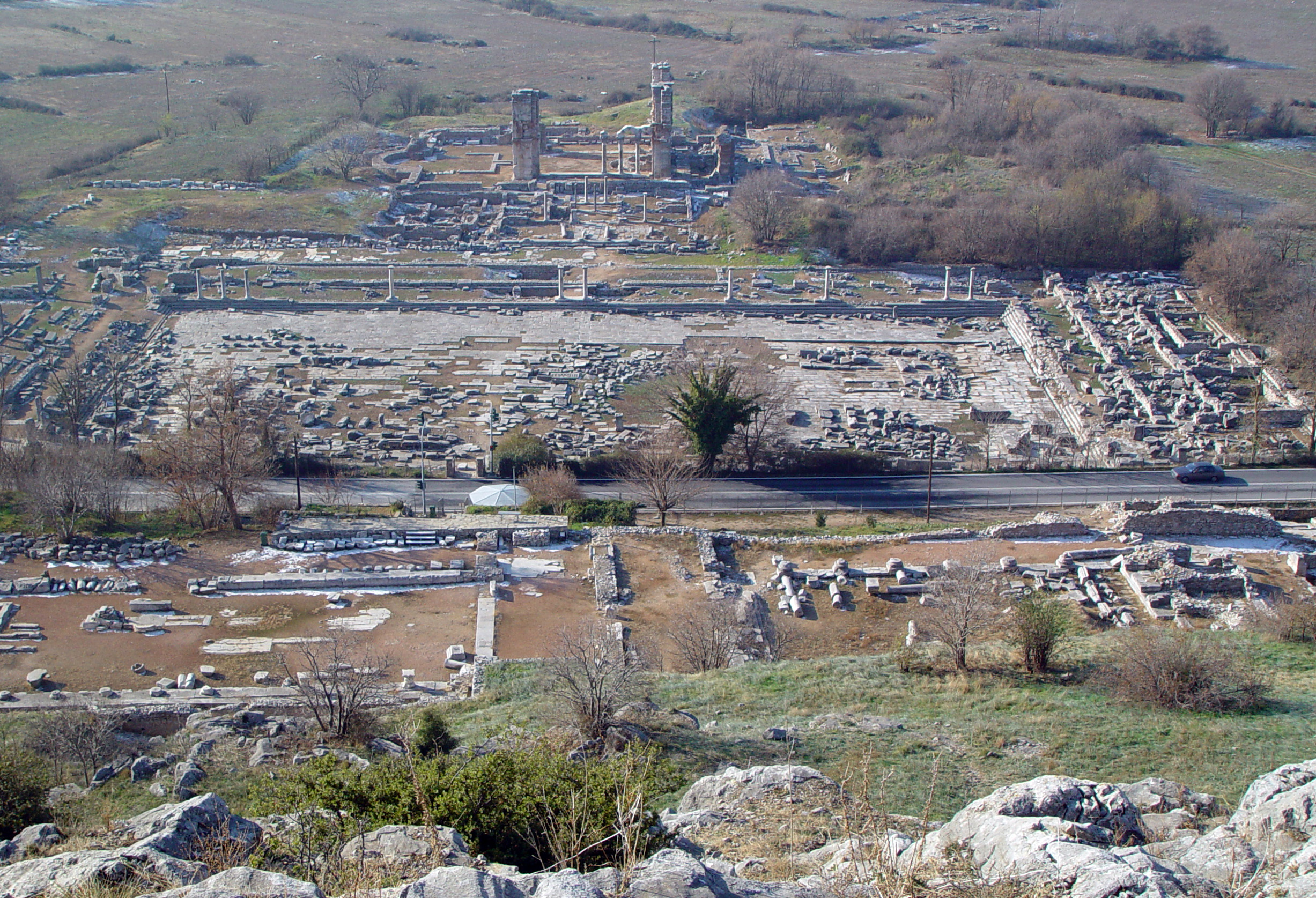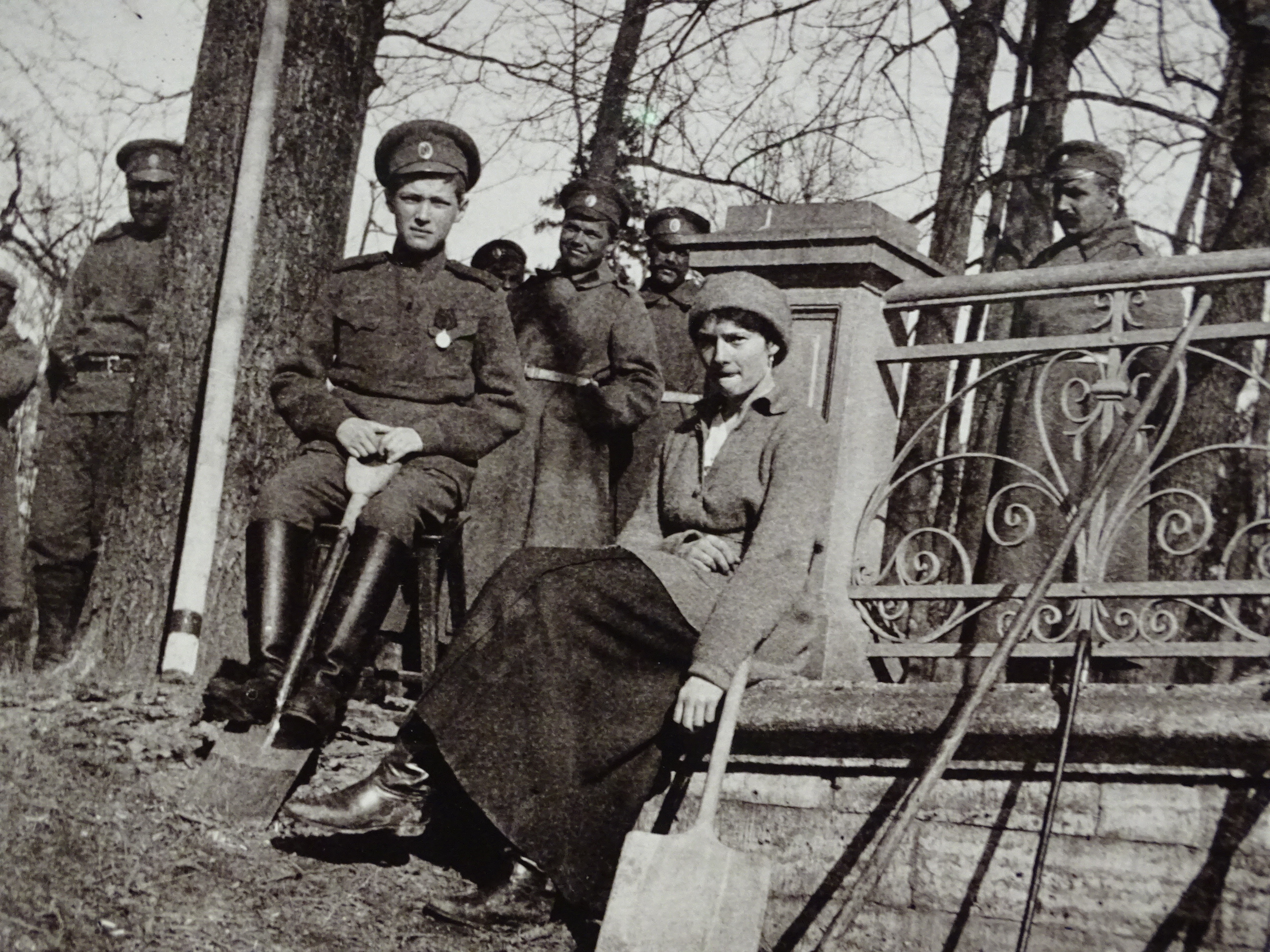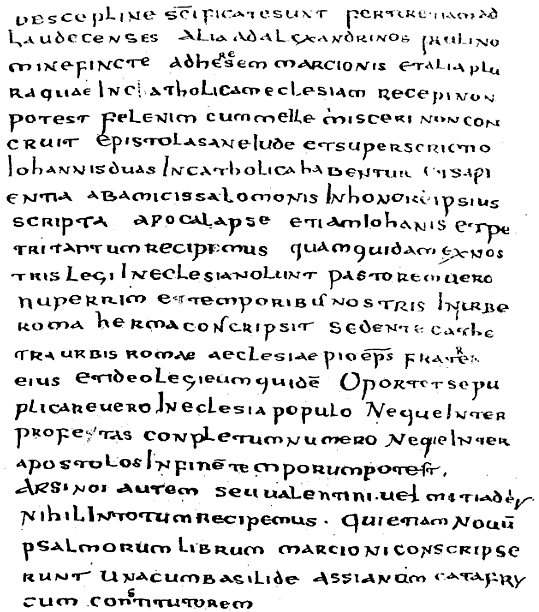|
Epistle To The Philippians
The Epistle to the Philippians is a Pauline epistle of the New Testament of the Christian Bible. The epistle is attributed to Paul the Apostle and Saint Timothy, Timothy is named with him as co-author or co-sender. The letter is addressed to the Christian church in Philippi. Paul, Timothy, Silas (and perhaps Luke the Evangelist, Luke) first visited Philippi in Early centers of Christianity#Greece, Greece (Macedonia (Roman province), Macedonia) during Paul's second Missionary journeys of Paul, missionary journey from Antioch, which occurred between approximately 49 and 51 AD. In the account of his visit in the Acts of the Apostles, Paul and Silas are accused of "disturbing the city". There is a general consensus that Philippians consists of authentically Pauline material, and that the epistle is a composite of multiple letter fragments from Paul to the church in Philippi. These letters could have been written from Ephesus in 52–55 AD or Caesarea Maritima in 57–59, but the most ... [...More Info...] [...Related Items...] OR: [Wikipedia] [Google] [Baidu] |
Pauline Epistle
The Pauline epistles, also known as Epistles of Paul or Letters of Paul, are the thirteen books of the New Testament attributed to Paul the Apostle, although the authorship of some is in dispute. Among these epistles are some of the earliest extant Christian documents. They provide an insight into the beliefs and controversies of early Christianity. As part of the canon of the New Testament, they are foundational texts for both Christian theology and ethics. Most scholars believe that Paul actually wrote seven of the Pauline epistles (Galatians, Romans, 1 Corinthians, 2 Corinthians, Philemon, Philippians, 1 Thessalonians), while three of the epistles in Paul's name are widely seen as pseudepigraphic (First Timothy, Second Timothy, and Titus).New Testament Letter Structure fro [...More Info...] [...Related Items...] OR: [Wikipedia] [Google] [Baidu] |
Philippi City Center
Philippi (; grc-gre, Φίλιπποι, ''Philippoi'') was a major Greek city northwest of the nearby island, Thasos. Its original name was Crenides ( grc-gre, Κρηνῖδες, ''Krenides'' "Fountains") after its establishment by Thasian colonists in 360/359 BC. The city was renamed by Philip II of Macedon in 356 BC and abandoned in the 14th century after the Ottoman conquest. The present municipality of Filippoi is located near the ruins of the ancient city and is part of the region of East Macedonia and Thrace in Kavala, Greece. The archaeological site was classified as a UNESCO World Heritage Site in 2016 because of its exceptional Roman architecture, its urban layout as a smaller reflection of Rome itself, and its importance in early Christianity. History Foundation Thasian colonists established a settlement at Krenides in Thrace in 360/359 BC near the head of the Aegean Sea at the foot of Mt. Orbelos, now called Mt. Lekani, about north-west of Kavalla, on the northern ... [...More Info...] [...Related Items...] OR: [Wikipedia] [Google] [Baidu] |
Circumcision
Circumcision is a surgical procedure, procedure that removes the foreskin from the human penis. In the most common form of the operation, the foreskin is extended with forceps, then a circumcision device may be placed, after which the foreskin is wikt:excise, excised. Topical or locally injected anesthesia is generally used to reduce pain and stress (physiology), physiologic stress. It is usually elective surgery, elective, performed as preventive healthcare, a Religious law, religious rite, or Culture, cultural practice. It is also an option for cases of phimosis, other Pathology, pathologies that do not resolve with other treatments, and chronic urinary tract infections (UTIs). The procedure is contraindicated in cases of certain genital structure abnormalities or poor general health. Circumcision is associated with reduced rates of sexually transmitted infections and urinary tract infections. This includes decreasing the incidence of Carcinogenesis, cancer-causing forms of ... [...More Info...] [...Related Items...] OR: [Wikipedia] [Google] [Baidu] |
2 Timothy
The Second Epistle to Timothy is one of the three pastoral epistles traditionally attributed to Paul the Apostle.. Addressed to Timothy, a fellow missionary, it is traditionally considered to be the last epistle he wrote before his death. Although the pastorals are written under Paul's name, they are different from his other epistles, and since the early 19th century, scholars have increasingly seen them as the work of an unknown student of Paul's doctrine.. They do not address Paul's common themes, such as the believers' unity with Christ, and they reflect a church hierarchy that is more organized and defined than the church was in Paul's time. Nonetheless, a number of major scholars have defended the traditional authorship of 2 Timothy. Authorship Some modern critical scholars argue that 2 Timothy, as well as the other two so-called 'pastoral letters' ( 1 Timothy and Titus), were not written by Paul but by an anonymous author, sometime between 90 and 140 AD. Some scholars ... [...More Info...] [...Related Items...] OR: [Wikipedia] [Google] [Baidu] |
House Arrest
In justice and law, house arrest (also called home confinement, home detention, or, in modern times, electronic monitoring) is a measure by which a person is confined by the authorities to their residence. Travel is usually restricted, if allowed at all. House arrest is an alternative to being in a prison while awaiting trial or after sentencing. While house arrest can be applied to criminal cases when prison does not seem an appropriate measure, the term is often applied to the use of house confinement as a measure of repression by authoritarian governments against political dissidents. In these cases, the person under house arrest often does not have access to any means of communication with people outside of the home; if electronic communication is allowed, conversations may be monitored. History Judges have imposed sentences of home confinement, as an alternative to prison, as far back as the 17th century. Galileo was confined to his home following his infamous trial ... [...More Info...] [...Related Items...] OR: [Wikipedia] [Google] [Baidu] |
Ecclesiology
In Christian theology, ecclesiology is the study of the Church, the origins of Christianity, its relationship to Jesus, its role in salvation, its polity, its discipline, its eschatology, and its leadership. In its early history, one of the Church's primary ecclesiological issues had to do with the status of Gentile members in what had become the New Testament fulfilment of the essentially Jewish Old Testament church. It later contended with such questions as whether it was to be governed by a council of presbyters or a single bishop, how much authority the bishop of Rome had over other major bishops, the role of the Church in the world, whether salvation was possible outside of the institution of the Church, the relationship between the Church and the State, and questions of theology and liturgy and other issues. Ecclesiology may be used in the specific sense of a particular church or denomination's character, self-described or otherwise. This is the sense of the word in su ... [...More Info...] [...Related Items...] OR: [Wikipedia] [Google] [Baidu] |
Evangelical Quarterly
''Evangelical Quarterly'' is an academic journal covering theology and biblical studies. It was established in 1929 by Donald Maclean (principal), Donald Maclean and J. R. Mackay. The current Editor-in-chief, editors are Richard Snoddy and John Nolland. The book reviews editor is Michael A. G. Haykin. External links * Protestant studies journals Publications established in 1929 English-language journals Quarterly journals {{christian-journal-stub ... [...More Info...] [...Related Items...] OR: [Wikipedia] [Google] [Baidu] |
Acts Of Peter
The Acts of Peter is one of the earliest of the apocryphal Acts of the Apostles in Christianity, dating to the late 2nd century AD. The majority of the text has survived only in the Latin translation of the Codex Vercellensis, under the title ("Act of Peter with Simon"). It is notable for a description of a miracle contest between Saint Peter and Simon Magus, the first record of the tradition that Saint Peter was crucified head-down, and as the origin of the saying " Quo vadis?". Dating and history The Acts of Peter were originally composed in Koine Greek during the second half of the 2nd century, probably in Asia Minor. The style of the Acts' writing is quite similar to that of four other apocryphal Acts – Acts of Andrew, Acts of John, Acts of Paul, and Acts of Thomas. For this reason, all five of these works were traditionally attributed to a single author; Photios I () identified this author as Leucius Charinus. Epiphanius () had earlier identified Leucius as a companio ... [...More Info...] [...Related Items...] OR: [Wikipedia] [Google] [Baidu] |
Spain
, image_flag = Bandera de España.svg , image_coat = Escudo de España (mazonado).svg , national_motto = ''Plus ultra'' (Latin)(English: "Further Beyond") , national_anthem = (English: "Royal March") , image_map = , map_caption = , image_map2 = , capital = Madrid , coordinates = , largest_city = Madrid , languages_type = Official language , languages = Spanish language, Spanish , ethnic_groups = , ethnic_groups_year = , ethnic_groups_ref = , religion = , religion_ref = , religion_year = 2020 , demonym = , government_type = Unitary state, Unitary Parliamentary system, parliamentary constitutional monarchy , leader_title1 = Monarchy of Spain, Monarch , leader_name1 = Felipe VI , leader_title2 = Prime Minister of Spain ... [...More Info...] [...Related Items...] OR: [Wikipedia] [Google] [Baidu] |
Muratorian Canon
The Muratorian fragment, also known as the Muratorian Canon (Latin: ), is a copy of perhaps the oldest known list of most of the books of the New Testament. The fragment, consisting of 85 lines, is a 7th-century Latin manuscript bound in a 7th- or 8th-century codex from the library of Columbanus's monastery at Bobbio Abbey; it contains features suggesting it is a translation from a Greek language, Greek original written about 170 or as late as the Christianity in the 4th century#Defining scripture, 4th century. Both the degraded condition of the manuscript and the poor Latin in which it was written have made it difficult to translate. The beginning of the fragment is missing, and it ends abruptly. The fragment consists of all that remains of a section of a list of all the works that were accepted as Biblical canon, canonical by the churches known to its original compiler. During the time period of early Christianity, there was no accepted "New Testament", merely books considered ... [...More Info...] [...Related Items...] OR: [Wikipedia] [Google] [Baidu] |
Clement Of Rome
Pope Clement I ( la, Clemens Romanus; Greek: grc, Κλήμης Ῥώμης, Klēmēs Rōmēs) ( – 99 AD) was bishop of Rome in the late first century AD. He is listed by Irenaeus and Tertullian as the bishop of Rome, holding office from 88 AD to his death in 99 AD. He is considered to be the first Apostolic Father of the Church, one of the three chief ones together with Polycarp and Ignatius of Antioch. Few details are known about Clement's life. Clement was said to have been consecrated by Peter the Apostle, and he is known to have been a leading member of the church in Rome in the late 1st century. Early church lists place him as the second or third bishop of Rome after Peter. The '' Liber Pontificalis'' states that Clement died in Greece in the third year of Emperor Trajan's reign, or 101 AD. Clement's only genuine extant writing is his letter to the church at Corinth (1 Clement) in response to a dispute in which certain presbyters of the Corinthian church had been deposed ... [...More Info...] [...Related Items...] OR: [Wikipedia] [Google] [Baidu] |
Historical Reliability Of The Acts Of The Apostles
The historical reliability of the Acts of the Apostles, the principal historical source for the Apostolic Age, is of interest for biblical scholars and historians of Early Christianity as part of the debate over the historicity of the Bible. Archaeological inscriptions and other independent sources show that Acts contains some accurate details of 1st century society with regard to the titles of officials, administrative divisions, town assemblies, and rules of the Second Temple in Jerusalem. However, the historicity of the depiction of Paul the Apostle in Acts is contested. Acts describes Paul differently from how Paul describes himself, both factually and theologically. Acts differs with Paul's letters on important issues, such as the Law, Paul's own apostleship, and his relation to the Jerusalem church. Scholars generally prefer Paul's account over that in Acts. Composition Narrative ''Luke–Acts'' is a two-part historical account traditionally ascribed to Luke, who was ... [...More Info...] [...Related Items...] OR: [Wikipedia] [Google] [Baidu] |







